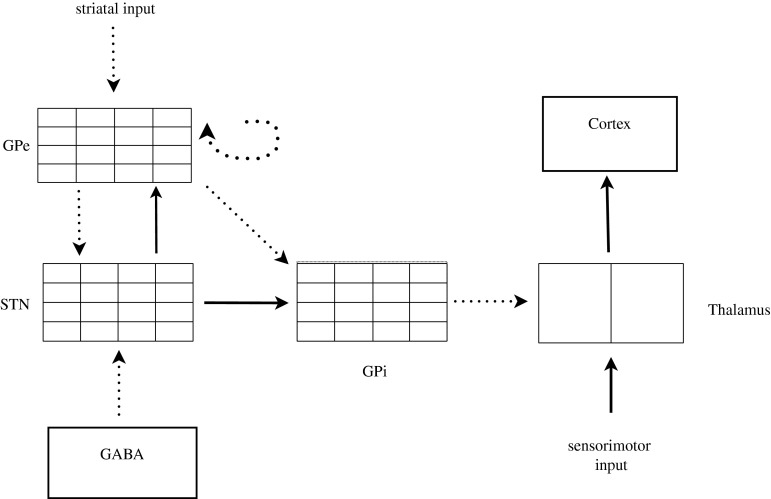Fig. 1.
Network model consisting of sixteen STN, GPe and GPi and two TC. The thalamus receives synaptic inhibition from GPi and excitatory input, related to sensorimotor activity. GPi and GPe both receive excitatory input from STN, and GPi receives inhibition from GPe. There is interpallidal inhibition among GPe neurons. STN receives inhibition from GPe and GABAergic currents. Each STN neuron receives inhibitory input from two GPe neurons. Each GPe neuron receives excitatory input from three STN neurons and inhibitory input from two other GPe neurons. Each GPi neuron receives excitatory input from one STN neuron. Each thalamic neuron receives inhibitory input from eight GPi neurons. The thalamus is viewed as a “relay station” where cells have the unique role of responding faithfully to each excitatory sensorimotor input. GPe receives striatal input. (Adapted from Rubin and Terman 2004)

